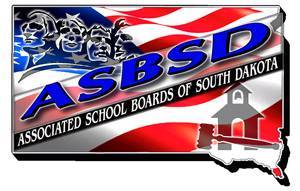After a legislative journey that saw new pieces added at each legislative stop, the state’s new funding formula was signed into law by Gov. Dennis Daugaard on the final day of the 2016 legislative session.
In the final week of legislative session, House members passed a freshly amended Senate Bill 131, which establishes a target teacher salary and a target teacher ratio and revises certain provisions regarding education funding, on a vote of 55-12 and the Senate concurred with the amended bill, 25-10.
An in-depth breakdown of the funding pieces of the bill can be found here.
SB 131 establishes a new funding formula for K-12 public schools based on a student-to-teacher ratio, sets a statewide average teacher salary goal of $48,500, adjusts provisions in the Capital Outlay fund, institute equalization principles for other revenue and set caps on general fund reserves.
Rep. Jacqueline Sly, Co-Chair of the Blue Ribbon Task Force, called the bill “one comprehensive plan” for public education funding.
“(Schools) understand now that the state is making a commitment,” ASBSD Executive Director Wade Pogany testified during the bill’s House Appropriations committee hearing.
“It sets in place a long range policy.”
Amendments introduced and added on the House side to SB 131 include:
- Reduced the lower end of the student-to-teacher ratio from 12.5 to 12;
- Fall enrollment will be used to determine a district’s student count.
- A second mandate requires 85 percent of the total state aid dollars be allocated for teacher pay and benefits;
- Statement of legislative intent that funds appropriated for teacher pay should be used to directly improve teacher recruiting and retention and that the school districts advance this goal by increasing starting teacher salaries and providing for the rapid acceleration of teacher salaries for those below the midpoint in that teacher’s applicable pay scale;
- Districts may opt in to an alternative local need option in which they would need to notify the S.D. Department of Education by July 1, 2016 they wish to retain all of their other revenue, which would count towards the district’s local effort. Districts opting in to the alternative local need option would forego any state aid that would count towards their total need until such time when their other revenue dollars no longer cover their total need OR they choose to utilize the state aid formula.
“The time is for us to now move forward,” Sen. Deb Soholt, Co-Chair of the Blue Ribbon Task Force, requested of her fellow Senators during the chamber’s concurrence vote.
Passage by the legislature and signing by the governor marked a historic session for public schools and teacher pay in South Dakota.
